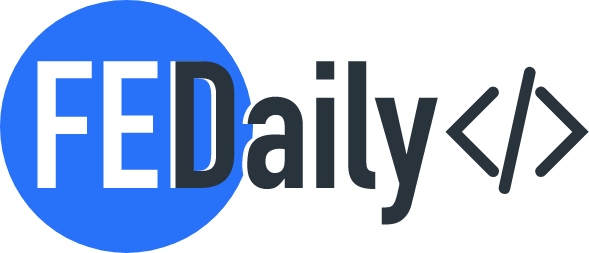HTML5 is not just a markup language; it’s a powerhouse of features and functionalities that have revolutionized web development. One of the most fascinating aspects of HTML5 is its extensive collection of APIs (Application Programming Interfaces) that enable developers to create interactive and dynamic web applications. Today, let’s take a closer look at some of the most useful and interesting HTML5 APIs.
Geolocation API 📍
With the Geolocation API, websites can access a user’s location information, allowing for location-based services and personalized experiences. From finding nearby restaurants to tracking your running route, this API opens up a world of possibilities.
<script>
function showPosition(position) {
alert("Latitude: " + position.coords.latitude +
"\nLongitude: " + position.coords.longitude);
}
function showError(error) {
alert("Error: " + error.message);
}
if (navigator.geolocation) {
navigator.geolocation.getCurrentPosition(showPosition, showError);
} else {
alert("Geolocation is not supported by this browser.");
}
</script>
Canvas API
The Canvas API provides a powerful way to draw graphics, animations, and even games directly in the browser. It’s like having a digital canvas at your disposal, enabling developers to create stunning visual effects and engaging user experiences.
<canvas id="myCanvas" width="200" height="100"></canvas>
<script>
var canvas = document.getElementById("myCanvas");
var context = canvas.getContext("2d");
context.fillStyle = "green";
context.fillRect(10, 10, 150, 80);
</script>
Local Storage API:
Gone are the days of relying solely on cookies for client-side data storage. The Local Storage API allows developers to store data locally on the user’s device, making it faster and more efficient. It’s perfect for creating offline-capable web applications or saving user preferences.
The Local Storage API allows you to store key/value pairs in a web browser with no expiration time.
<script>
localStorage.setItem("username", "JohnDoe");
var storedUsername = localStorage.getItem("username");
alert("Username: " + storedUsername);
</script>
Drag and Drop API
Drag and Drop functionality is no longer limited to desktop applications. With the Drag and Drop API, developers can easily add this intuitive feature to their web applications, allowing users to interact with content more naturally and seamlessly.
Check this example
<!DOCTYPE html>
<html lang="en">
<head>
<meta charset="UTF-8">
<meta name="viewport" content="width=device-width, initial-scale=1.0">
<title>Drag and Drop Example</title>
<style>
/* Style for draggable and drop zones */
.draggable {
width: 100px;
height: 50px;
background-color: #3498db;
color: #fff;
text-align: center;
line-height: 50px;
margin: 10px;
cursor: move;
}
.dropzone {
width: 200px;
height: 100px;
border: 2px dashed #2c3e50;
margin: 10px;
}
</style>
</head>
<body>
<div class="draggable" draggable="true" id="dragElement">Drag me!</div>
<div class="dropzone" id="dropZone" ondrop="drop(event)" ondragover="allowDrop(event)">
Drop here
</div>
<script>
// Event handler to allow dropping
function allowDrop(event) {
event.preventDefault();
}
// Event handler when a draggable element is dropped
function drop(event) {
event.preventDefault();
// Get the data being dragged
var data = event.dataTransfer.getData("text");
// Append the dragged element to the drop zone
var draggedElement = document.getElementById(data);
event.target.appendChild(draggedElement);
}
// Event handler when dragging starts
document.getElementById("dragElement").addEventListener("dragstart", function(event) {
// Set the data being dragged and the drag effect
event.dataTransfer.setData("text", event.target.id);
event.dataTransfer.dropEffect = "move";
});
</script>
</body>
</html>
Web Audio API
The Web Audio API enables developers to create and manipulate audio in the browser. From playing music to generating sound effects, this API unlocks a whole new level of audio capabilities, making it perfect for music apps, games, and interactive experiences.
<script>
var audioContext = new (window.AudioContext || window.webkitAudioContext)();
var oscillator = audioContext.createOscillator();
oscillator.type = 'sine';
oscillator.frequency.setValueAtTime(440, audioContext.currentTime);
oscillator.connect(audioContext.destination);
oscillator.start();
</script>
WebSocket API:
The WebSocket API enables bidirectional communication between the client and the server.
<script>
var socket = new WebSocket("ws://example.com/socket");
socket.onopen = function(event) {
console.log("WebSocket connection opened:", event);
socket.send("Hello, server!");
};
socket.onmessage = function(event) {
console.log("Message from server:", event.data);
};
socket.onclose = function(event) {
console.log("WebSocket connection closed:", event);
};
</script>
These are just a few examples of the incredible HTML5 APIs that are available to developers. With each passing day, more and more APIs are being developed, expanding the possibilities of what can be achieved on the web. So, don your coding cap and start exploring the exciting world of HTML5 APIs!
